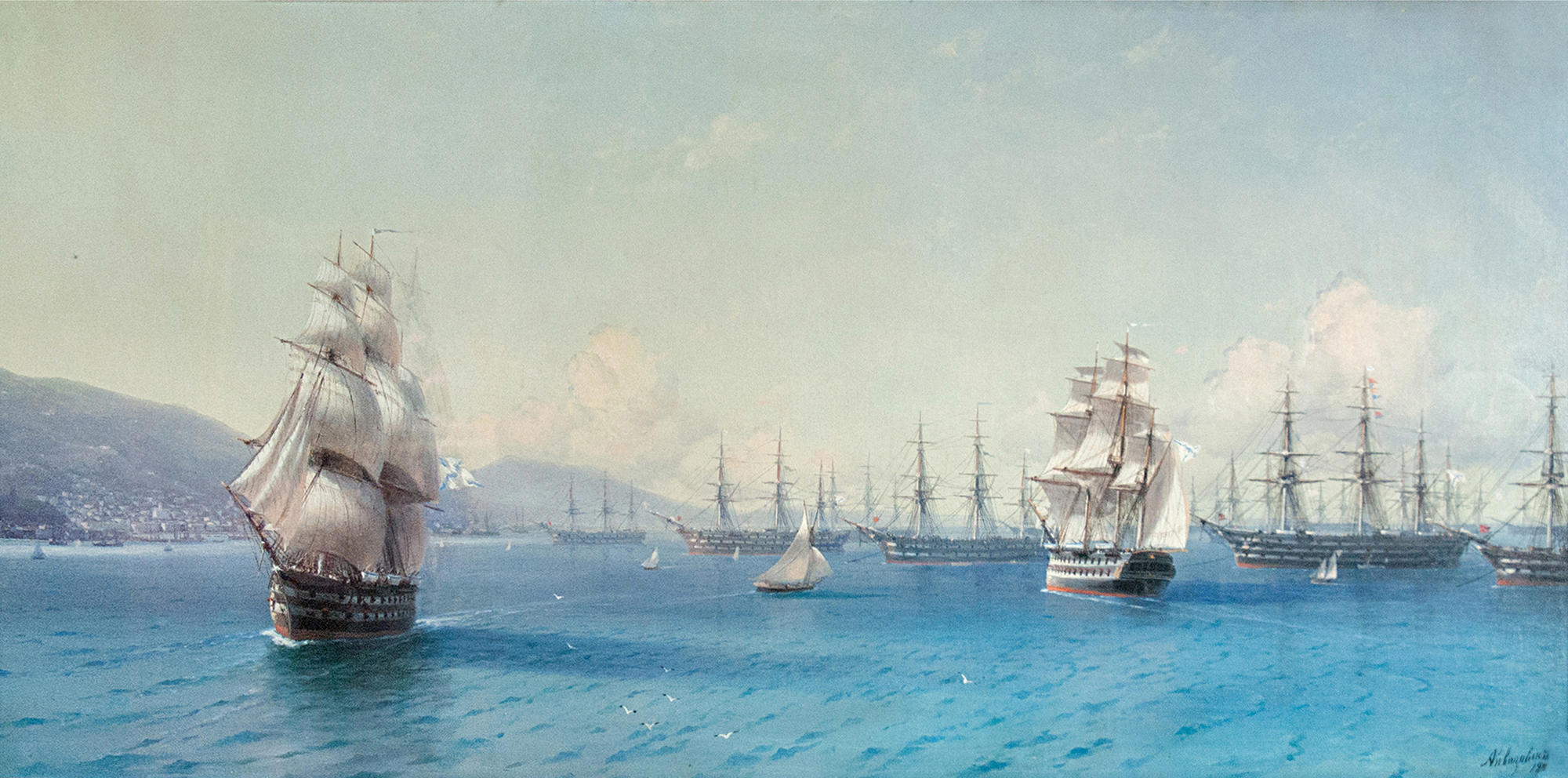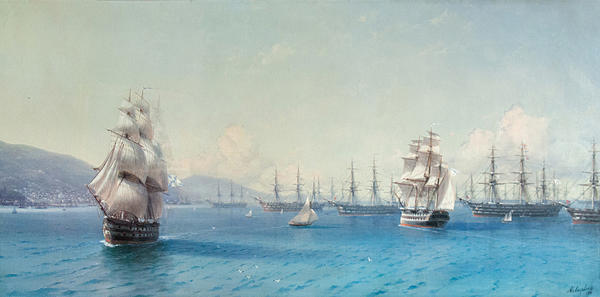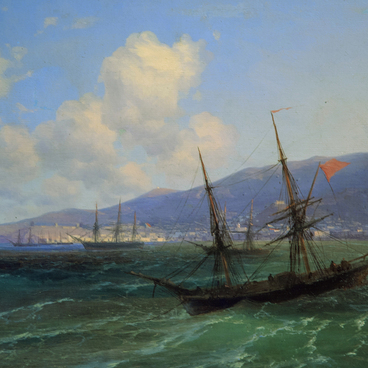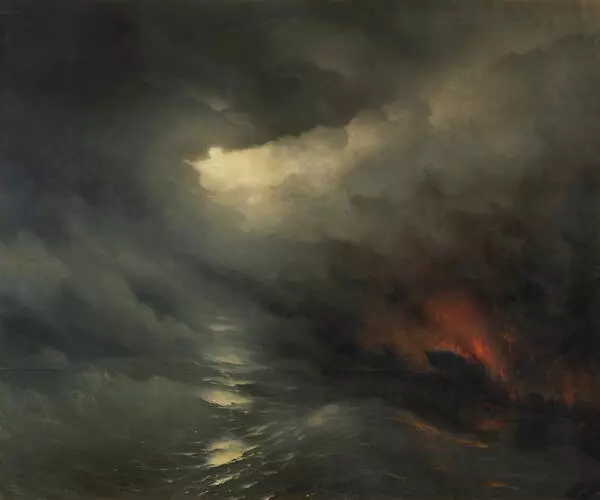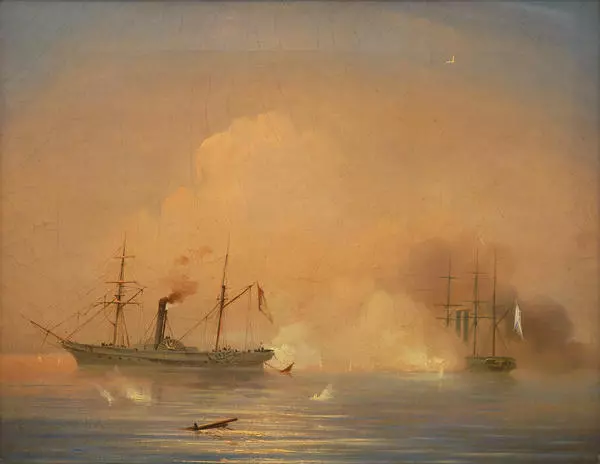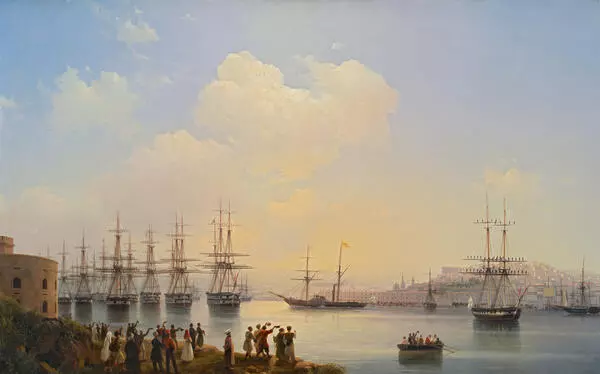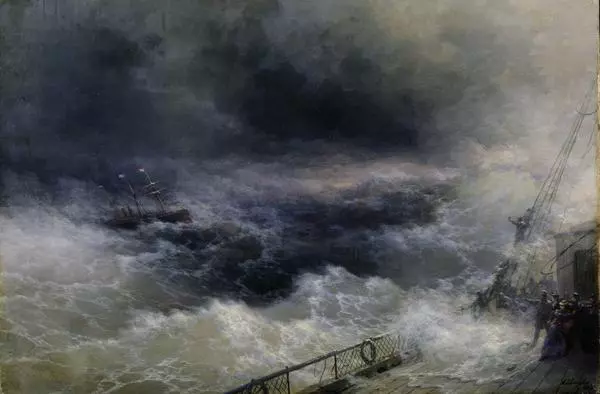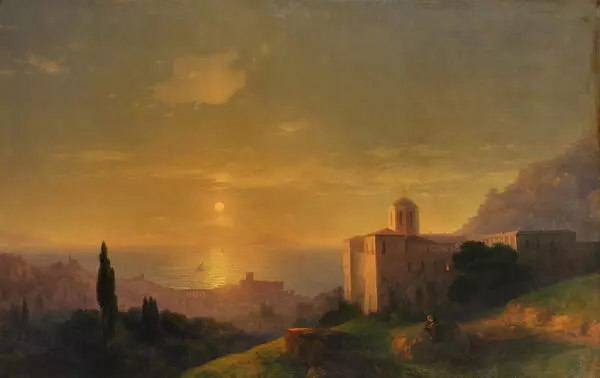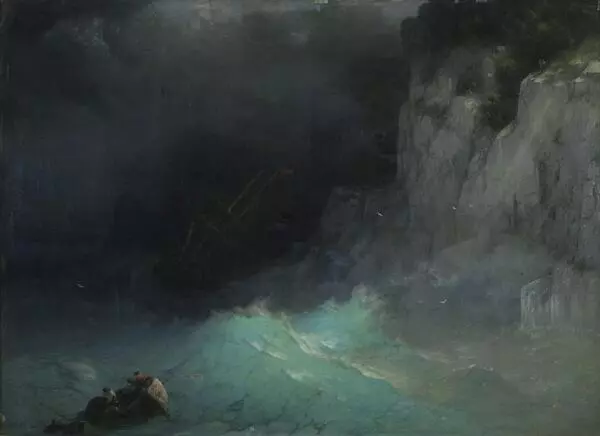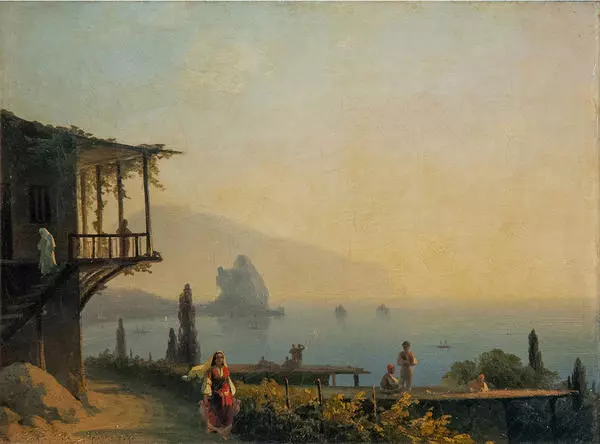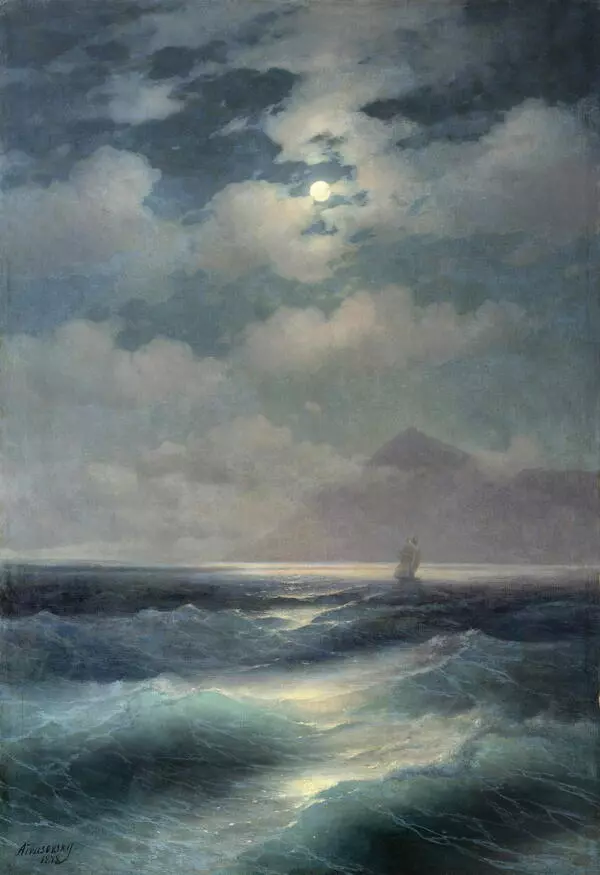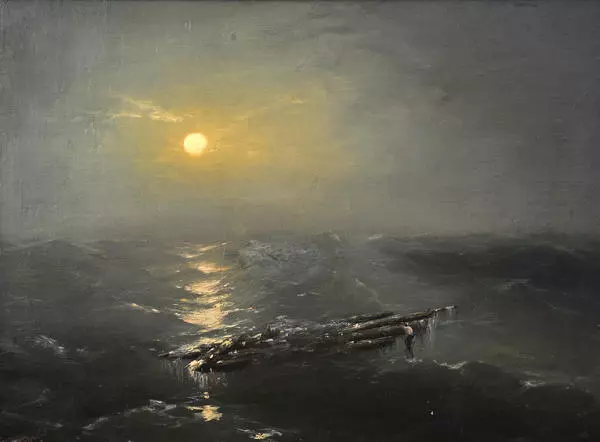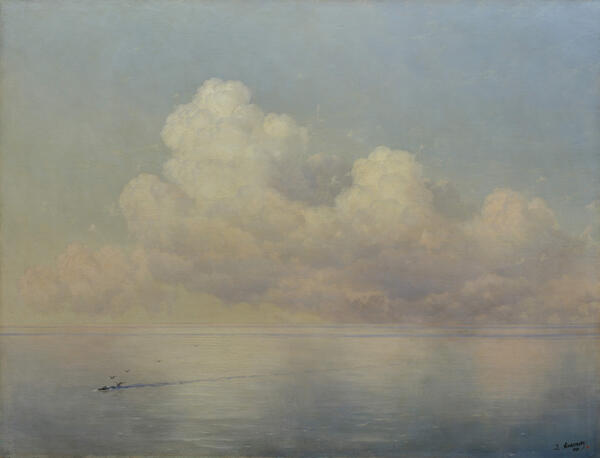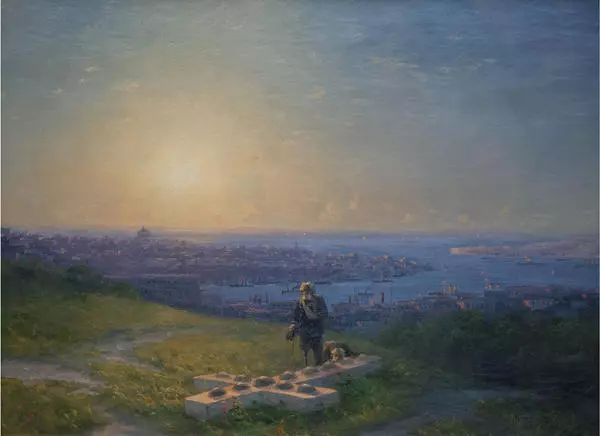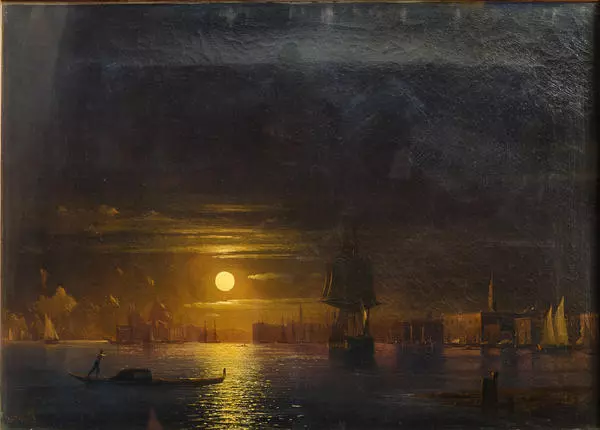Ivan Aivazovsky was the first artist of the Navy General Staff. His works have every right to be called a chronicle of the Russian Navy whose heroic deeds the artist glorified his whole life. He participated in many expeditions of the ships of the Baltic and Black Sea fleets. Such expeditions made Aivazovsky the favourite naval artist and a friend of many outstanding naval commanders.
In the 1850s, the artist attended Black Sea fleet manoeuvres. Later, he would keep returning to depiction of magnificent war ships and episodes based on the 1853–1856 Crimean war events. For example, Aivazovsky painted twice the famous Battle of Sinop in which the Russian Navy scored a resounding victory over the Ottoman Navy. It was the Crimean war that led to the presence of Russian ships in the Black Sea, the question that could not leave indifferent Aivazovsky, a native of Feodosia who dedicated his life to glorifying naval military deeds.
In The Black Sea Fleet Just Before the Crimean War the artist depicted arrival of a ship squadron at the Sebastopol harbour. The high sky in combination with the blue of the sea create a rich colour gamut. Aivazovsky masterfully painted the formation of the ships receding beyond the horizon. The picture is filled with an optimistic mood coming from revitalising light and the warmth of sun rays symbolising a happy outcome of the war. The canvas is full of light and air, it does not have the element of drama which the artist often imparts to his works and which is meant to convey the interrelation of man and the force of nature.
That was a time when Aivazovsky’s contribution to Russian art had never been called into doubt. He was in the forefront of the leading masters of Russian painting and many of his masterpieces were created then. In the 1890s, Aivazovsky combined his unceasing public activity with his creative work. Practically every year there were exhibitions of his works in Russia, and in 1890 the artist opened his exhibition in Paris. “The exhibition of I.K. Aivazovsky”s pictures in Paris raised the importance of Russian painting in the eyes of the French”, — the press wrote about it.
In the 1850s, the artist attended Black Sea fleet manoeuvres. Later, he would keep returning to depiction of magnificent war ships and episodes based on the 1853–1856 Crimean war events. For example, Aivazovsky painted twice the famous Battle of Sinop in which the Russian Navy scored a resounding victory over the Ottoman Navy. It was the Crimean war that led to the presence of Russian ships in the Black Sea, the question that could not leave indifferent Aivazovsky, a native of Feodosia who dedicated his life to glorifying naval military deeds.
In The Black Sea Fleet Just Before the Crimean War the artist depicted arrival of a ship squadron at the Sebastopol harbour. The high sky in combination with the blue of the sea create a rich colour gamut. Aivazovsky masterfully painted the formation of the ships receding beyond the horizon. The picture is filled with an optimistic mood coming from revitalising light and the warmth of sun rays symbolising a happy outcome of the war. The canvas is full of light and air, it does not have the element of drama which the artist often imparts to his works and which is meant to convey the interrelation of man and the force of nature.
That was a time when Aivazovsky’s contribution to Russian art had never been called into doubt. He was in the forefront of the leading masters of Russian painting and many of his masterpieces were created then. In the 1890s, Aivazovsky combined his unceasing public activity with his creative work. Practically every year there were exhibitions of his works in Russia, and in 1890 the artist opened his exhibition in Paris. “The exhibition of I.K. Aivazovsky”s pictures in Paris raised the importance of Russian painting in the eyes of the French”, — the press wrote about it.
